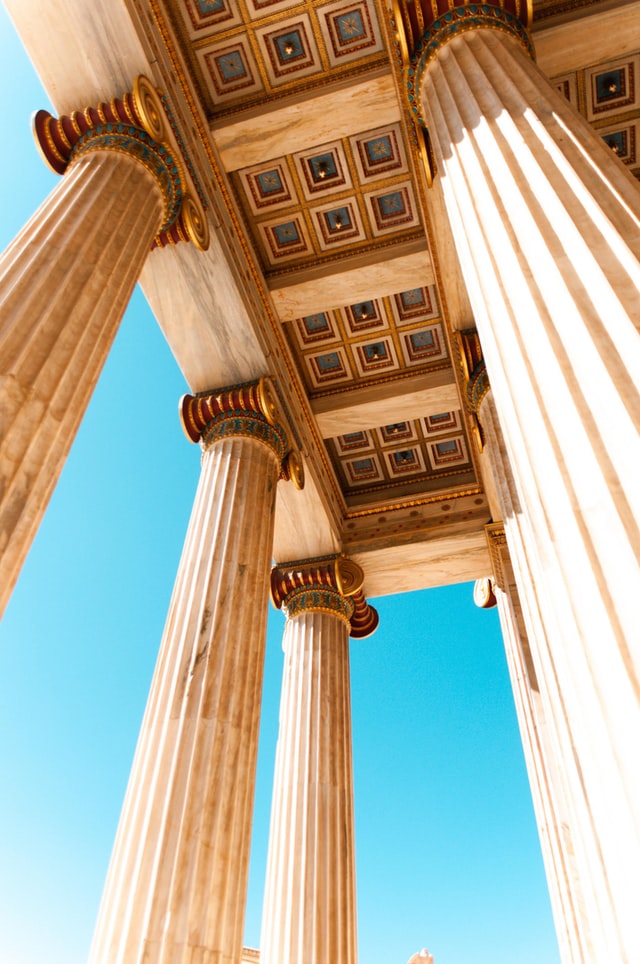
In this series we pay tribute to the art we wish could visit — and hope to see once travel restrictions are lifted.
In Book Two of the Republic, Plato famously describes the “fevered” city, a town bustling with artists, musicians, actors, butchers, barbers, courtesans, and … confectionery!
Plato was clearly talking about the Athens of his day, but, over 2,000 years later, he could have easily been talking about modern Athens.
The city remains just as hectic and sweet treats remain just as much a part of the city’s landscape.
Sweet retreat
There are few words more wonderful in the Greek language than zacharoplasteio, the Greek word for a cake shop.
Literally meaning “a place of sugar sculpture”, these shops treat the subject of cake-making with the seriousness it deserves. How I miss the great piles of silver and gold foil-wrapped chocolates, the baklava and kataifi pastries dripping in syrup, and, most of all, the trays of halvas farsalon caramelized on top and studded with almonds quivering in amber unctuousness.
Yet, as much as I love all the chaos of modern Athens, it also a place that can quickly become overwhelming. This is especially the case in summer when crowds clog up the streets and the baking heat extends well into the evening.
Fortunately, a trip to the countryside of Athens allows you to escape the pandemonium. It is also home to a wide variety of fascinating archaeological sites.
Ancient wandering
Within an hour’s drive from the centre of Athens, you can wander among the extensive remains of an ancient town at Rhamnous, or stroll among seas of wild flowers bursting with colour on the plains that witnessed the battle of Marathon.
Nearby you can visit the shrine of the Greek hero Amphiaraos, where Greeks would sleep in the hope that the hero would visit them in their dreams and provide them with oracular visions.
South of Athens you can explore a cave devoted to the wild god Pan and nymphs. The sanctuary was built by a passionate devotee called Archedemus, literally the world’s first nymphomaniac. Alternatively, you can visit one of the oldest surviving stone theatres at Thorikos or watch the sun set into the sea by the ruins of the Temple of Poseidon at Sounion.
One of my favourite sites is the sanctuary of Artemis at Brauron. Like many sanctuaries to Artemis, it is located in a marsh. The Greeks were always fascinated by places where fresh water turned salty. It seemed a great mystery to them why fresh water rivers kept running into the sea, yet the ocean remained permanently undrinkable.
A goddess of puberty and fertility
Artemis was the virgin goddess of the hunt. Yet, this sanctuary acknowledges another aspect of the deity, her strong connection with childbirth.
Artemis was particularly associated with puberty and the transition to fertility. Women worried about issues of fertility or the dangers of childbirth would make offerings to the goddess. These were particularly grave concerns in a culture where women were primarily valued in terms of their ability to produce children, and where every woman would know someone who had not survived their pregnancy.
The nearby Brauron museum preserves many of the gifts made by these women. These include numerous statues of children. Many survive intact.
The museum also features cases of disembodied children’s marble heads and limbs. Depending on your feelings towards children, it is one of the cutest or creepiest exhibitions on display in Greece.
The sanctuary played an important role in the lives of young Athenian girls. It was here that an important coming of age ritual was staged. At some point, around the age of ten, young girls came to the sanctuary and “became bears”. The precise details of this ritual remain unclear. The most plausible suggestion involves the young girls dressing up in bear costumes or wearing bear masks as well as taking part in naked races and dances.
Scholars looking for a metaphorical explanation of the ritual point to the way that “becoming a bear” symbolises the wild, dangerous, untamed nature of pubescent girls. Parents with teenage daughters might be able to relate.
Working up an appetite
Only the foundations of the temple to Artemis survive. The most intact remains are a row of columns associated with dining rooms that would have housed the feasts of visitors to the sanctuary. Standing in an open field, below a rocky outcrop, they make a picturesque sight amongst the reeds, the croaking of the frogs, the humming of the cicadas, and the occasional banging sounds of amorous tortoises.
There is also a shrine to Iphigenia, the daughter of King Agamemnon, who was offered as a human sacrifice to Artemis by her father in order to get fair winds to allow his fleet to sail to Troy and begin the Trojan War. Fortunately, Artemis swapped Iphigenia with a deer at the last moment and whisked the girl to safety.
After a number of adventures, Iphigenia was eventually rescued by her brother Orestes and came to Brauron, where she spent her remaining days as a priestess of Artemis.
The site makes a wonderful day trip from Athens. Close to the sea, the nearby tavernas are replete with local seafood. Perfect for a late lunch of fava, ouzo, and octopus or fried fish and a Horiatiki (Greek) salad or, better yet, horta. Just make sure that you leave room for a slice of karidopita.
Paul Eliadis Chair of Classics and Ancient History, The University of Queensland
Disclosure statement
Alastair Blanshard does not work for, consult, own shares in or receive funding from any company or organisation that would benefit from this article, and has disclosed no relevant affiliations beyond their academic appointment.
This post was originally published at The Conversation.
